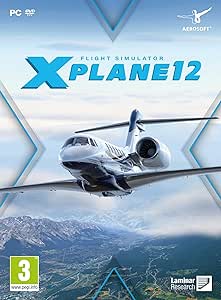The sky is not the limit, it's just the beginning
- Craig J A

- Jan 29, 2024
- 5 min read
The dream of soaring through the skies as an international pilot is an ambition shared by many in the UK, I have a friend that took the plunge whilst working full time in another industry. When I log onto Instagram I get the chance to see his journey as he clocks up his flying hours. I have seen him flying from the UK to the borders of France, but I have also seen the rigorous studying involved when he posts his text books. It never came to my mind that I should write a blog on this until I saw him obtain his license, then I thought Bingo!
Now I had seen my friend pass numerous exams/certifications and he probably got annoyed at the amount of times I asked what "type" of pilot he is and "what exam is this? ". Just for the record he is a commercial pilot. So for those considering becoming a pilot I thought I would outline the different types of pilots. I knew that there were different dynamics to aviation e.g. type of aircraft, type of engine and type of carrier which may seem quite obvious, but it is still important to give an overview.
•Commercial Airline Pilot: The face of the aviation industry, responsible for flying passengers and crew safely to destinations. This role demands impeccable skills, strict adherence to safety protocols, and the ability to handle long-haul flights.
• Cargo Pilot: Often overlooked yet vital, cargo pilots transport goods across the globe. This role offers more unconventional flight times and routes, providing a different kind of flying experience
• Charter/Air Taxi Pilot: These pilots fly smaller aircraft and offer a more intimate flying experience. They often have more direct interaction with passengers and can fly to less-travelled destinations.
• Private Jet Pilot: A high-profile role, flying business executives or celebrities. This job often requires being on call but offers luxurious working conditions and unique travel experiences.
• Agricultural Pilot: Specialized pilots who fly low over farmland, providing services like crop dusting. This niche role requires precise flying skills and an understanding of agricultural practices. Indeed further breaks this down as they help potential employees learn about different jobs within the industry.
Before you take off on this journey, it's crucial to understand what qualifications & certifications are required. In the UK, the Civil Aviation Authority (CAA) sets the standards for pilots. Here are the key requirements:
Age and Medical Fitness: You must be at least 17 years old to obtain a Private Pilot Licence (PPL) and 18 for a Commercial Pilot Licence (CPL). A key requirement is passing a medical examination – Class 1 for commercial and Class 2 for private flying. There needs to be a level of language proficiency - Proficiency in English is essential for communication purposes. If you click on the image bellow it will take you to the CAA that breaks down the exact requirements and the pilot licensing regulations.
So what are the steps to becoming a pilot? The first actual step in your journey is selecting a reputable flight training school. Look for schools approved by the CAA and consider factors such as location, cost, and the training fleet. Visiting schools and speaking with instructors can provide valuable insights. Due to Brexit the regulatory shift from EASA to the UK CAA has led to some flight training organisations to adjust their programs potentially affecting training costs. The terms and availability of financial support, such as loans or grants for pilot training, may have changed post-Brexit. Prospective pilots should research current options for financial aid or sponsorship. As exciting as it is flying through the sky, it is important to note that acquiring a pilot license is an expensive process. Medical costs, instructing fees, aircraft rental fees and licensing fees can rack up.
In the UK you start with a Student Pilot Licence, allowing you to begin flight training under an instructor's supervision. This involves a straightforward application to the CAA. Flight training is both practical and theoretical. You'll learn about air law, aircraft operations, navigation, and meteorology, among other topics. For a PPL (Private Pilot License), you need a minimum of 45 flying hours, while a CPL (Commercial Pilot license) requires at least 150 hours, including PPL hours. You must pass multiple-choice exams in various subjects like air law, human performance, and meteorology. These exams test your theoretical knowledge, which is vital for safe flying. An exciting part of your training will be solo flights. You'll need to accumulate a specific number of flying hours to qualify for your license, under the supervision of your instructors of course.
Then there's the Grand Daddy, the practical flight examination where you demonstrate your flying skills, including pre-flight preparation, navigation, performing various manoeuvres and an oral exam on theoretical knowledge. After passing the skills test, you will be awarded your PPL or CPL, officially making you a certified pilot in the UK. Hopefully this gives you an oversight of the steps to becoming a pilot
Training and Renowned Schools Pilot training in the UK is globally respected. Schools like CAE Oxford Aviation Academy and Flight Training Europe in Jerez offer state-of-the-art facilities and training programs. These schools provide not only practical flight training but also extensive theoretical knowledge, preparing students for the challenges of a piloting career.
Pilot Bloggers like ‘The Pilot Guys’ and ‘CaptainJoeUK’ provide real-life insights into the pilot’s journey. They discuss everything from the excitement of their first solo flight to the challenges of irregular sleep patterns and maintaining a work-life balance.
Career Prospects Career opportunities for pilots extend beyond commercial airlines it includes cargo flying, corporate aviation and even roles in aviation management. The demand for pilots is expected to grow especially with the resurgence of global travel.
Now usually I give a list of few book recommendations related to the blog topic but I understand obtaining your pilot license is an intense process and my blog is to encourage not to discourage. I don't want to bombard you with Meteorology theory just yet. Training Resources Books like “The Pilot’s Manual: Ground School” provide foundational knowledge. You can click on the below image to get.
I remember walking into a games shop as a teenager and seeing the price of the flight stimulators and I could not work out why they were so expensive, until I actually got the chance to play one. I experienced how realistic these stimulators were and we are going back 10+ years. Popular Flight simulators such as ‘X-Plane’ or ‘Microsoft Flight Simulator’ offer realistic training experiences without getting onto an actual aircraft, you can get them below.
While the path may be costly and demanding it paves the way to a career that offers not just a unique vantage point above the clouds, but also a sense of unparalleled freedom and responsibility. As you navigate through the rigorous training and examinations, remember that each step brings you closer to fulfilling a dream shared by many but achieved by a dedicated few. Whether for professional aspirations or personal achievement, the journey to becoming a pilot is an adventure of a lifetime.











Comments